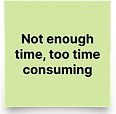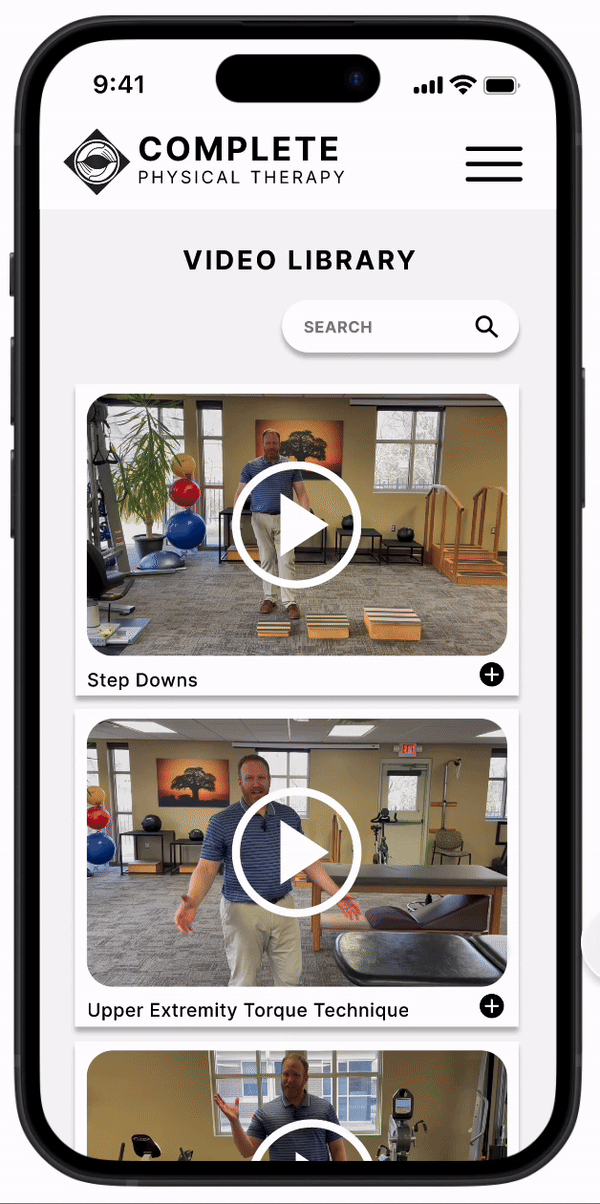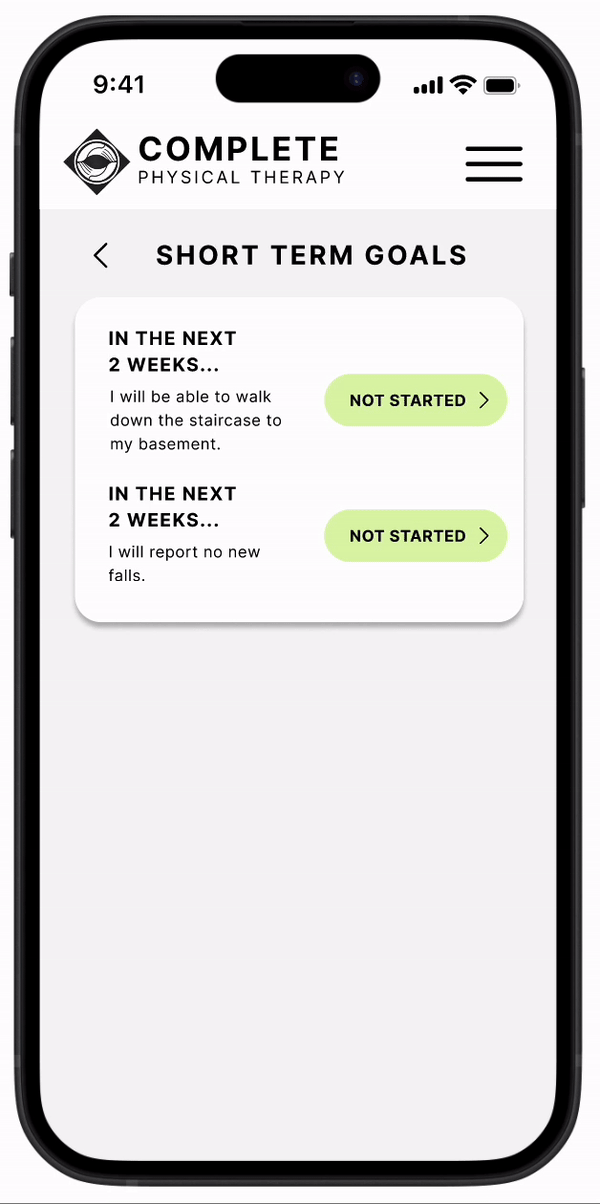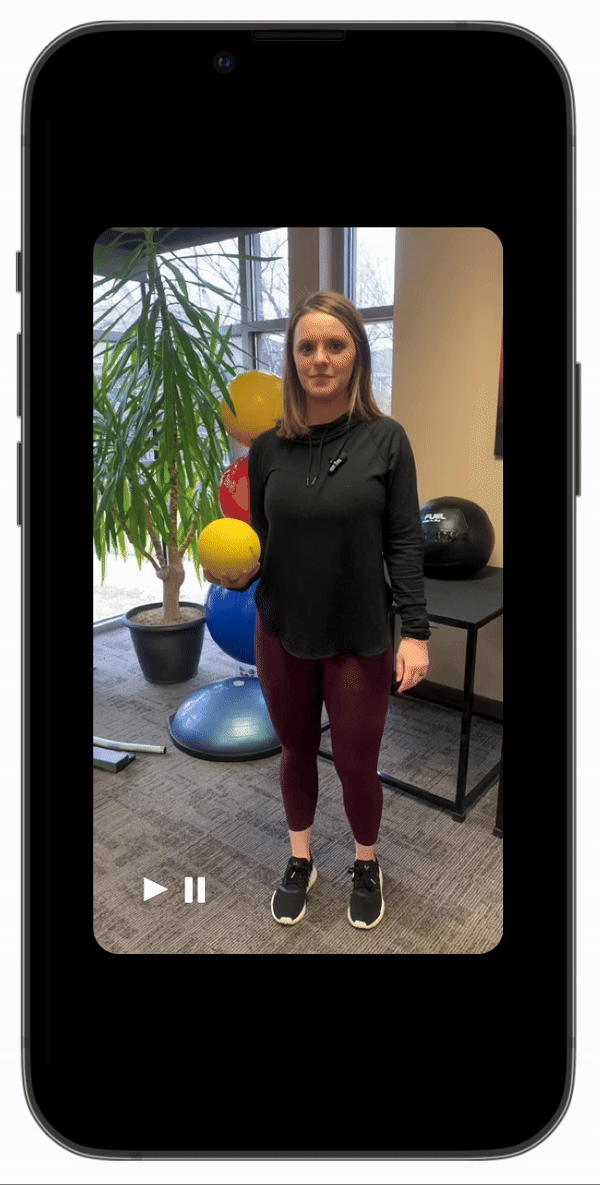_edited.jpg)

Patient involvement during and outside of physical therapy sessions is vital to the success of recovery. Non-adherence to prescribed home exercises programs increases the risk of recurrent injury and negatively impacts outcomes.
How can we improve compliance and increase motivation? Traditional home exercise print outs only provide a two dimensional explanation, which can be misleading and confusing. In this case study, I dive into this problem to better understand the patient and the factors leading to noncompliance.
I was the lead UX researcher and designer to this case study project. My experience working as a Physical Therapist Assistant for 8 years has given me a first hand account of the struggles and effects of home exercise program (HEP) noncompliance.
Using the 5 steps of the UX design process, I created the Complete Physical Therapy Home Exercise Portal for my Google Certificate Course. The outdated model of paper handouts needs a facelift, and I am excited to share how an interactive digital portal can improve usability and ultimately increase exercise adherence.
Evidence from research estimates nonadherence of home exercise as high as 50%. Adherence is currently defined by the World Health Organization (WHO) as “the extent to which a person’s behavior corresponds with agreed recommendations from a health care provider."
Due to lack of consistent and reliable method of measurement, as well as potential bias due to self reports, it is not possible to accurately say to what extent these rates impact clinical outcomes. However, it is concluded that self efficacy, locus of control, pain, prior activity levels, social support, perceived barriers, and psychological symptoms are factors.
I performed my own initial research through the past and current patients I’ve worked with, compiling a list of pain points to better understand their perspective.
Using this information, it was determined that users need:
-
Better home exercises instruction to improve understanding and reduce confusion. To improve instruction, I will add HEP videos so patients can follow along or refer to back to. This will reduce the number of patient that avoid exercise because they don't understand handwritten instructions.
-
A way to monitor progress to create positive habits. This type of user needs to improve accountability. To help make exercises a habit, I will create a portal to monitor compliance, progress, and changes in pain ratings.
The target audience includes:
-
Users who have busy schedules and lack time (need consistency/accountability)
-
Users who are confused and unable to understand how to do the exercises
-
Users limited by psychological factors and perceived barriers leading to noncompliance













AGE
JOB TITLE
STATUS
LOCATION
76
RETIRED
MARRIED
LINCOLN, NE

"I am set in my ways, it is hard to change habits I've been doing for 70+ years."
ABOUT
Betty is a 76 year old wife, mother, and grandmother. She enjoys craft activities such as knitting and sewing. Neck pain has limited her ability to perform these activities and it is disrupting her quality of life. She started physical therapy, but is having a hard time remembering to perform home exercises.
GOALS
-
Easy to follow HEP instructions
-
Wants help with accountability
PAIN POINTS
-
I don't like being uncomfortable and hate exercising
-
I don't understand the handouts
-
I am not getting better
USER PERSONA
ABOUT
Matt started outpatient physical therapy 4 weeks ago and is still having knee pain. He is frustrated that he isn't getting better and is starting to question if PT is even helping. He admits he hasn't been performing his home exercises.
GOALS
-
Would like to make practical changes to feel better
-
Need reminders to be consistent with HEP
-
Exercises should not be time consuming
PAIN POINTS
-
Don't have time for home exercises
-
I am so busy that I forget to do the exercises
USER PERSONA
AGE
JOB TITLE
STATUS
EDUCATION
LOCATION
55
IT SPECIALIST
MARRIED
BACHELOR'S
EAGLE, NE

"I know I should do my home exercises, but I keep forgetting. I'm frustrated with myself."


QUESTIONS
I want to learn what the user thinks of the digital HEP portal prototypes, as well as test the functionality of the HEP portal.
-
Is this something that the user would find beneficial or practical to use in real life? If so, would this improve exercise compliance?
-
What features do they like best? What features are missing? What other tools could improve exercise adherence?
-
Do all functions serve a purpose? Do all interactions work?
-
Are there any design changes that can be made to improve user experience?
-
15 minutes
-
USA (remotely)
-
Unmoderated usability study
-
Users were asked to perform a tasks in both low fidelity and high fidelity prototypes on two separate occasions.
-
5 individuals
-
40-80 years old
-
3 females, 2 males
-
At least three users with a chronic ailment
PORTAL HOME SCREEN
To improve navigation, a portal screen was created as a central location, where the user can see an organized view of categories they can navigate through (ex: today's report, my exercises, my stats, etc.).
ADDING GOAL SETTING
Goals are a vital part to success. All users verbalized an interest in setting goals to improve motivation. A section was added for users to customize short term and long term goals to work towards.
CUSTOMIZABLE EXERCISE LIST
The functionality of the exercise list is of upmost importance. During usability studies, the majority of users voiced frustration due to missing features and inability to add exercises.
VIDEO PLAYING FEATURES
It is essential that the videos are functional. I added video buttons so users can play/pause, as well as rewind and fast forward. Prior to this change, users voiced frustration when having to click out and start the video from the beginning.
IMPROVE ACCESSIBILITY
Not only do I want this web design to be functional, I want to maximize the experience for all. This includes individuals with disabilities. To improve this, I created annotations and labeling to communicate to engineers. This will allow for screen readers and other assistive technology.
I decided to keep with high contrast colors to improve visibility. Changes were also made to increase font size and size of button for easy tapping/clicking. Many of the users are of older age and prefer larger text. Blue and green create an inviting experience and represent a balance of tranquility and serenity. It also is associated with the rejuvenating qualities of nature that can promote healing.
_edited.jpg)
_edited.jpg)
_edited.jpg)
_edited.jpg)

To improve navigation, a portal screen was created as a central location, where the user can see an organized view of categories he/she can navigate through (ex: today's report, my goals, my stats, etc.). This takes away the repetitive back arrow navigation users disliked during usability studies. This also improves the user's ability to report their day (using series of pop ups instead of submitting a form).
_edited.png)
_edited.png)

The original prototype required users to track their exercise compliance and other subjective data by clicking a button on the exercise screen.

Now users can log their information through the portal home screen.



Each user will have the ability to add exercise videos to their own personalized list. The search bar now categorizes the videos based on type of exercise/body part, so users can narrow down their search. During usability studies, users had a difficult time adding videos to their list. I added a hover feature on the plus icon to indicate that it can be clicked. A pop up and and check icon was also added so the user could visually see the exercise was added.


Goals are a vital part to user's success. Three out of five users verbalized an interest in setting goals to improve motivation. A section was added for users to customize short term and long term goals to work towards. If users selects short term, it will navigate to short term time frames. If the user selects long term, it will navigate to long term frames. In addition, users can track the status of their goals and update throughout their recovery (not started, in progress, goal met).


Per the Web Content Accessibility Guidelines (WCAG), I discovered a few ways to make CPT Home Exercise Portal more accessible to those with disabilities.
-
Made annotations next to interactive UI elements (ex: call to action buttons) in traversal order, so screen readers can follow navigational flow
-
Using hierarchal headings to highlight areas of importance
-
Use labels to determine the purpose of the control




_edited.jpg)
Because this was created for my Google course and not a real life client, I did not follow through with any KPIs (ex: task success rate, user error rate). Going forward, I should perform additional usability tests and surveys to see how users like or dislike the changes. In addition, I could create a measurable tool to see success rate in terms of rehabbing the injury/ailment. Do those who utilize the portal have better functional outcomes? Do they reach their goals? There will always be further iterations to be made, as users' needs may change over time. In terms of design, I would like to improve the look and functionality of the buttons. labels, and titles in the exercise library.
















